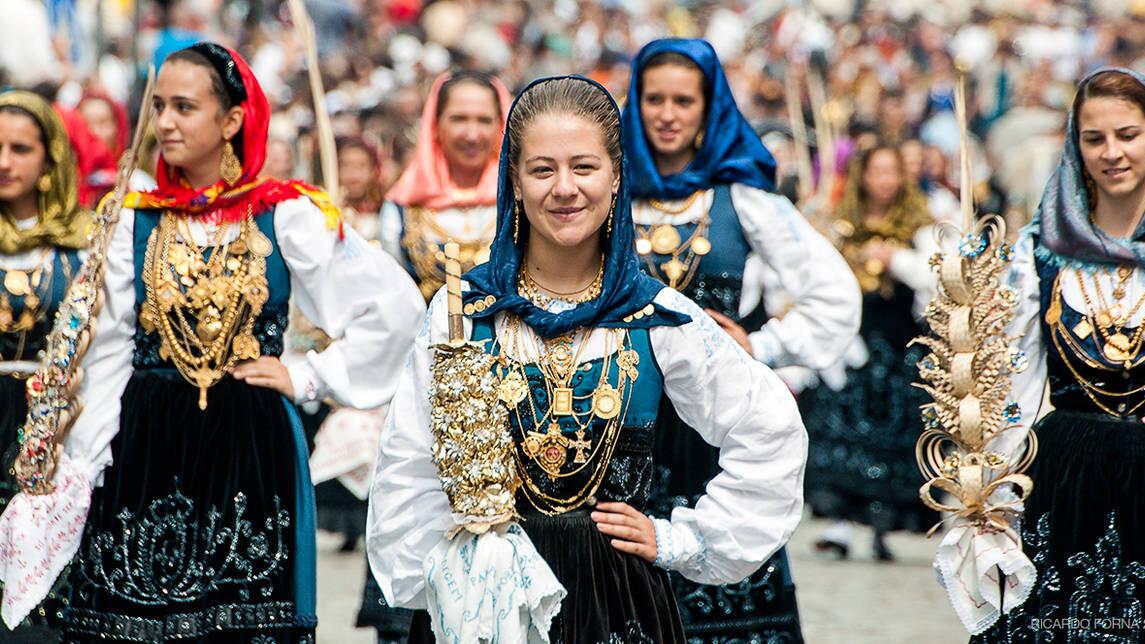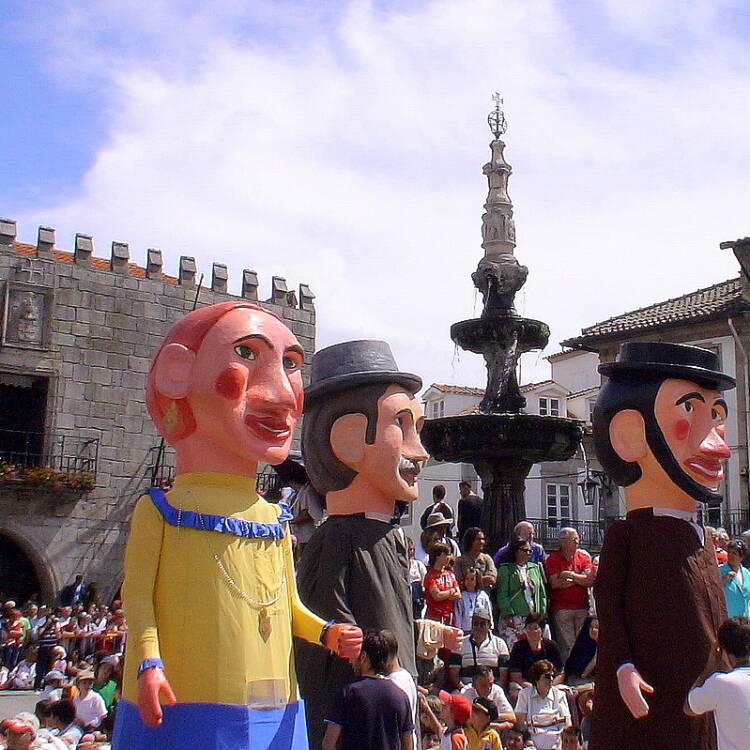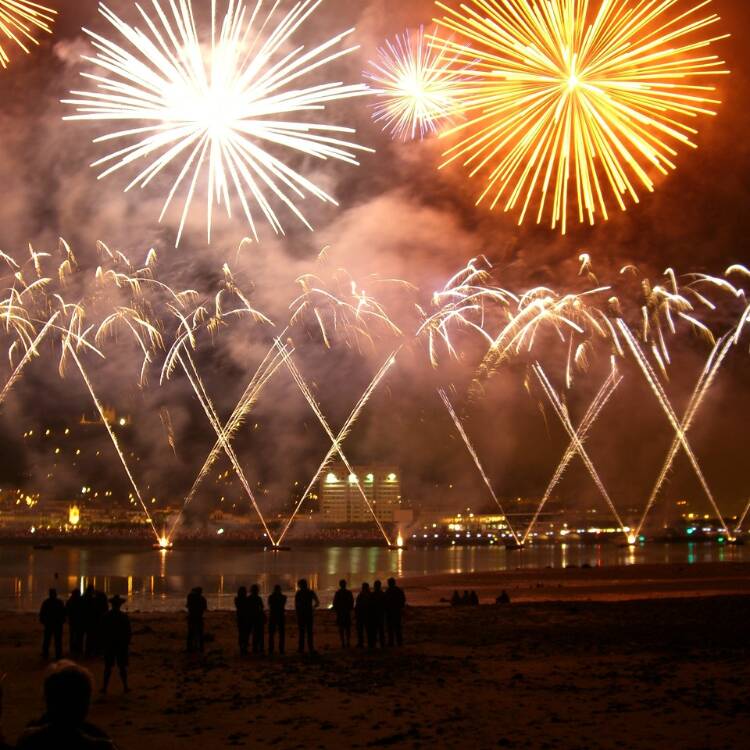Festivities of Our Lady of Agony: A Celebration of Faith and Tradition in Viana do Castelo
The Festivities of Our Lady of Agony are one of the most emblematic and vibrant celebrations in Portugal. Held annually in Viana do Castelo, these festivals stand out for their beauty, tradition, and devotion, attracting thousands of visitors from all over the country and the world. Let's explore the various facets of this festivity, from its origins to the details of the events that make up the program.
Rosino,CC BY-SA 2.0, via Wikimedia Commons
Origin and Meaning of “Festas da Agonia”
The veneration of Our Lady of Agony in Viana do Castelo dates back to 1744. Local fishermen invoked the Virgin of Agony for protection against the dangers of the sea, especially the storms and shipwrecks that are frequent in the region. The word "agony" originates from the harrowing struggle of gladiators in ancient Rome, a perfect metaphor for the fishermen's daily battle against the forces of the sea. Devotion grew and, in 1772, a royal ordinance authorized the holding of a free fair on the 18th, 19th, and 20th of August, consolidating the Pilgrimage of Our Lady of the Agony as one of the grandest popular festivals in the country.
Viana do Castelo Festival Program
Viana do Castelo's festival program is extensive and varied, reflecting the cultural and religious richness of the region. Among the main events, the mordomas parade, the ethnographic procession, the historical procession, and the procession to the sea stand out.
Mordomas Parade
One of the most anticipated moments of the festivities is the mordomas parade. More than half a thousand women, known as Viana mordomas, parade through the city's streets dressed in traditional Minho costumes and carrying kilos of gold on their chests. This is considered the largest open-air gold display in the world. The mordomas represent different parishes of Viana do Castelo and display unique pieces of jewelry that are passed down from generation to generation.
Processions and Traditions
Ethnographic Procession
The ethnographic procession is a true journey through time, featuring floats that portray the customs and traditions of the Minho region. This event is a living museum of ethnography, where you can see representations of agricultural work, fishing activities, and traditional festivals. Each float is carefully decorated to tell a story, often mixing legends and realities that marked the history of Viana do Castelo.
Historical Procession
In the historic parade, the city celebrates its rich cultural and historical heritage. This event mixes legends and historical facts, creating a visual spectacle that captivates the viewers. The streets of Viana do Castelo become a stage where historical and legendary figures come to life, transporting everyone to times gone by.
Procession to the Sea
The procession to the sea is one of the most symbolic events of the festival. The image of Our Lady of Agony, dressed in a purple and blue cloak, is placed on a trawler and taken to the sea to bless the waters. Hundreds of decorated boats follow the trawler, creating a stunning scene. This procession symbolizes the city's deep connection with the sea and the fishermen's faith in the protection of the Virgin of Agony.
Festivities and Entertainment
During festival days, the city of Viana do Castelo is filled with excitement and joy. Thousands of people walk the streets, and visit taverns and restaurants where they can taste delicious Portuguese cuisine, washed down with the region's Vinho Verde. The bandstands spread across the city are filled with music, with bands playing throughout the day.
On the last night of the festivities, spectacular fireworks light up the sky over the century-old bridge on the Lima River, marking the end of the celebrations. This moment is one of the most exciting and attracts crowds who gather to admire the brilliant cascade of lights reflected in the river waters.
Mordomas of Viana: Guardians of Tradition
Viana's mordomas play a central role in the festivities. They dress in traditional costumes, which range from the simplest, worn by farmers, to the most refined, worn by the city's ladies. The stewardship parade is an opportunity to showcase the richness and diversity of Viennese costumes, as well as the elaborate pieces of jewelry that are often only displayed in public during this occasion.
These women dedicate themselves to preparing the costumes with impressive rigor and detail. Every detail is carefully studied to ensure that tradition is kept alive and that the history of its ancestors is honored. This parade is a testimony to the “chieira” (pride) of the women of Viana do Castelo, who pass this tradition from generation to generation.
Viana do Castelo Costume: A Symbol of Identity
The traditional costumes of Viana do Castelo are an essential part of the Our Lady of Agony festivities. These costumes, which vary depending on the parish, are rich in details and embroidery, reflecting the history and culture of the region. Farmers, for example, wear colorful skirts and embroidered aprons, while mordomas wear more refined attire, often decorated with lace and brocade.
Jewelry pieces are another crucial element of the outfit. The Hearts of Viana, the 19.2 kt gold earrings like the Heart of Viana earrings, and bracelets like the Bracelet Viana’s Conta are some of the pieces that make up this outfit. These jewels often passed down from generation to generation, are worn with pride and symbolize the wealth and cultural heritage of Viana do Castelo.
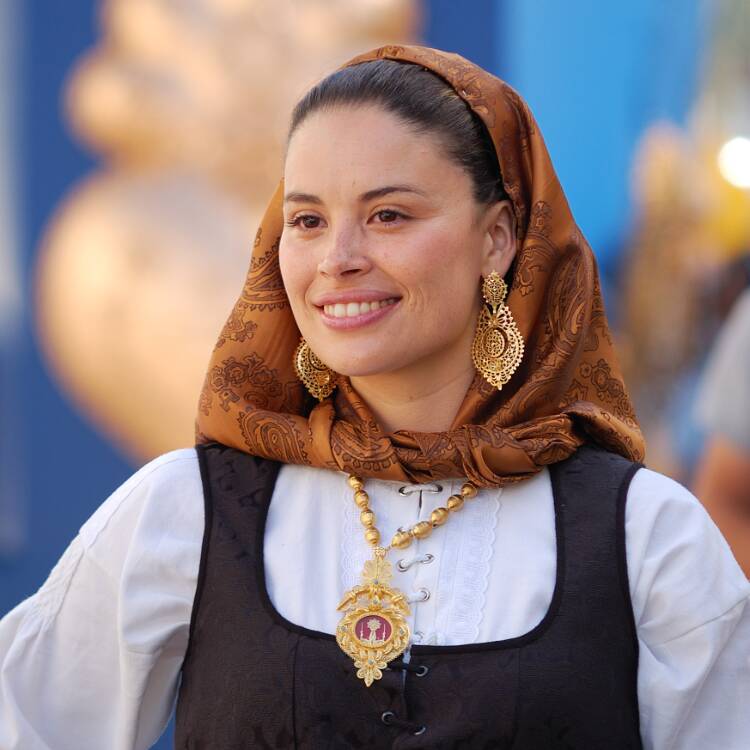
Rosino, CC BY-SA 2.0, via Wikimedia Commons
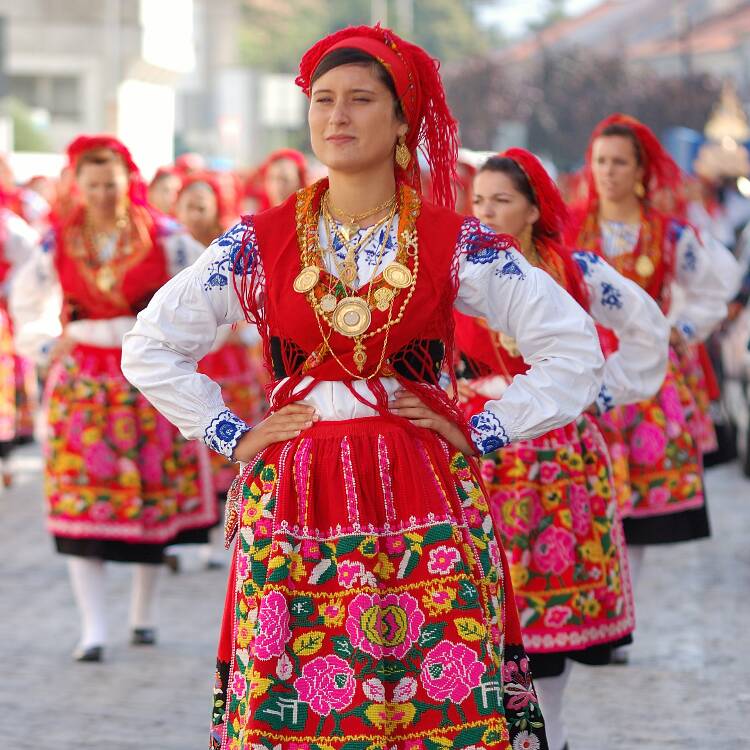
Rosino, CC BY-SA 2.0, via Wikimedia Commons
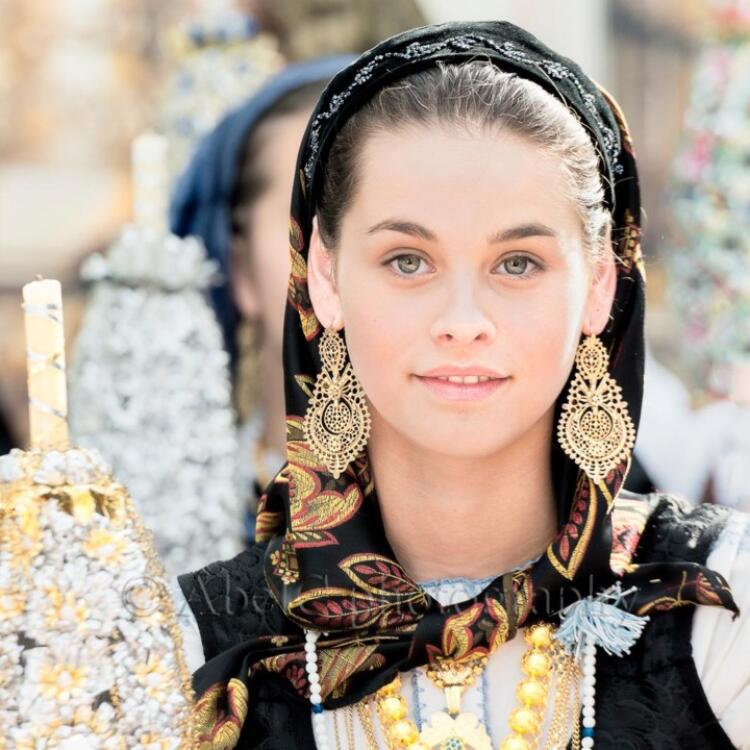
Rosino, CC BY-SA 2.0, via Wikimedia Commons
The Role of Traditional Jewelry in the Holidays
Jewelry plays a crucial role in the celebrations of Our Lady of Agony. Gold and silver pieces, many of which are passed down from generation to generation, are a symbol of wealth and status. The Hearts of Viana, the gold and silver earrings, and the bracelets are some of the most emblematic pieces that can be seen during the stewardship parade.
If you are interested in purchasing a traditional piece of jewelry from Viana, Portugal Jewels offer a wide collection of jewelry inspired by Viana traditions. From 19.2 kt gold earrings, like the Coração de Viana earrings, to even bracelets in golden silver like the Contas de Viana Bracelet, Portugal Jewels has the perfect piece to celebrate this tradition.
Viana do Castelo: A City of Culture and Tradition
Viana do Castelo, in addition to being the stage for the Our Lady of Agony festivities, is a city rich in culture and history. Located in the Minho region, this city is known for its historical monuments, such as the “Santa Luzia” Sanctuary, and its traditional architecture. During the festivities, the city takes on a new life, with the streets decorated and the inhabitants dressed up.
Visit the Festivities of Our Lady of Agony
The Festivities of Our Lady of Agony are a unique celebration that combines faith, tradition, and culture in an incomparable way. Viana do Castelo becomes a stage of joy and devotion, where each event reflects the history and identity of the city. If you have the opportunity to visit Viana do Castelo during the festivities, don't miss the opportunity to participate in this incredible celebration and explore the region's rich cultural heritage.
To take with you a souvenir of this unique experience, explore the collection of traditional jewelry in Portugal Jewels. From the iconic Hearts of Viana to the elegant “Contas of Viana”, you will find the perfect piece to celebrate and remember this unique tradition.


